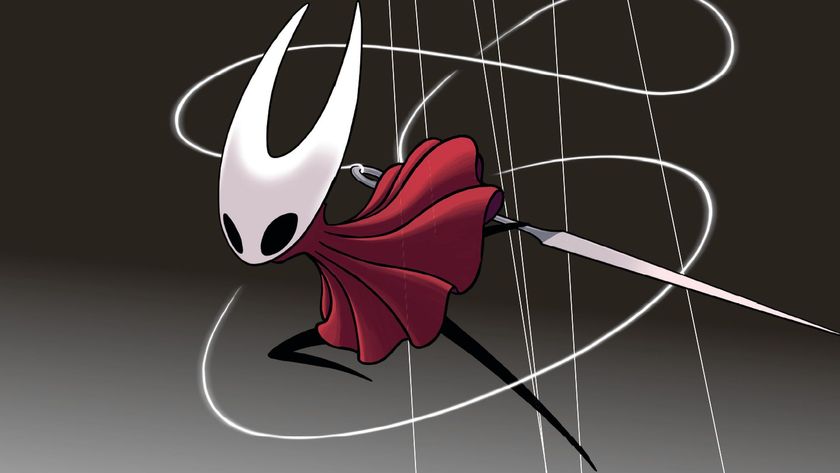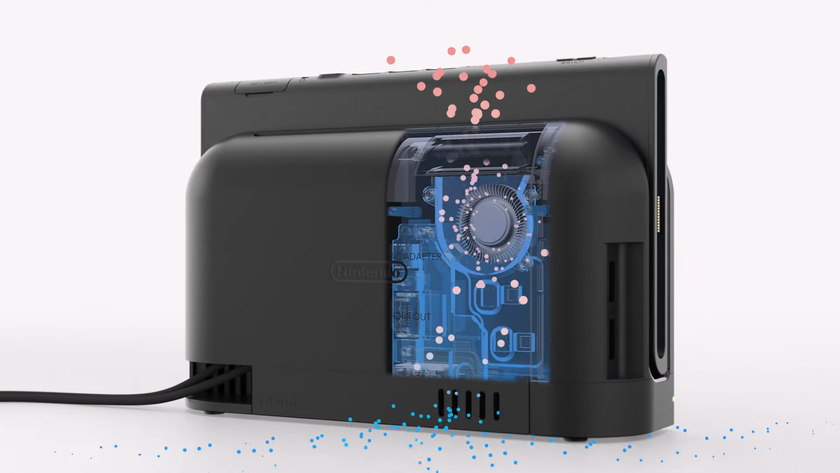Nvidia Shield review
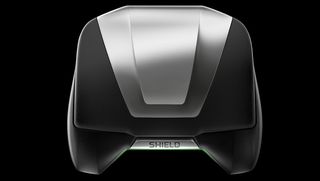
A PC in the palm of your hand?
If you're on the hunt for an Android console, the Ouya isn't the only player in town. The Nvidia Shield is the latest Android platform targeted at the gaming populace, combining the screen of a handheld with the heft of a console controller. But the Shield's biggest sell is something you probably haven't seen before: the power to stream games from a high-end gaming PC onto the small screen.
The Shield sounds like the future made manifest--a Tegra 4-powered handheld with the ability to display graphics that put the 3DS and Vita to shame. But how does it work in practice? We tested the Shield extensively to help you make a purchasing decision, and while it certainly delivers on its promise of a cutting-edge handheld, there are a number of caveats that will make you think twice before ponying up $300.

You'll love: Streaming PC games on a handheld
Playing PC games away from your keyboard is the main draw of the Shield, and when it works, it's undoubtedly impressive. Your computer does all the processing grunt work, sending a wireless video and audio signal to the Shield, which acts as the controller. The end result: you can play Skyrim while reclining in your bed, along with a host of other graphics-intensive Steam games.
It may not be a one-for-one duplication of what'd you see on your computer monitor; the framerate suffers slightly due to the streaming. But the mere fact that games like Borderlands 2, Metro: Last Light, and Dirt 3 can be played in the palm of your hand is astounding, simply for the sheer novelty of it. Android games are nice and all, but they're not the reason why anyone would buy a Shield.
Dark cloud: The list of officially supported games is fairly small at the moment, with a heavy emphasis on FPS and racing titles. Also...

You'll hate: When the streaming doesn't work perfectly
With any wireless device, latency is bound to be an issue, and while the Shield has some impressive power, it can't escape the feeling of a little lag. The audio is the most prevalent problem, because even the slightest delay between sight and sound threatens to sully the whole experience. Depending on how OCD you are about the authenticity of your gaming experience, even a milliseconds-long pause between the flash of your muzzle and the sound of a gunshot in a game like Metro can be absolutely maddening.
What's worse is when you're unceremoniously ripped out of your experience altogether. Should the Shield's signal waiver due to any network interference, your audio and video connection will be severed instantly. You'll pick up where you left off once you reconnect, but being wrenched out of the game in such a jarring way will completely deflate the action.
Silver lining: The PC streaming is still in beta, and will very likely improve over time as patches iron out the kinks.

You'll love: How sturdy the controller feels
Oh sure, the Shield might not look like much at first sight. But once you've gotten your hands on it, it's as comfy as a broken-in baseball glove. You could think of the Shield as a fusion between the buttons and triggers of an Xbox 360 controller with the joystick orientation of the Dual Shock 3. The shape of the Shield's grip is nearly identical to that of a 360 controller, with the same X-Y-A-B button layout and seemingly identical joysticks. And not to fear--the D-pad feels much more natural than the 360's.
The clamshell-style screen is attached in such a way that the controller's balance always feels just right, and the screen's angle is easily adjusted without ever sliding around on its own. In terms of weight, the Shield is surprisingly light; your arms aren't likely to get fatigued from marathon gaming sessions, and it rests nicely on your chest if you're streaming Steam games in bed.
Dark cloud: If you have particularly petite hands, holding the Shield will feel beyond bulky.
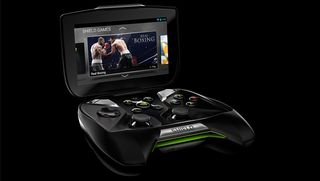
You'll love: The impressive quality of the device as as a whole
Once you've gotten a grip on the Shield controller, the next thing you'll notice is the screen. When you're not preoccupied with using the touchscreen as an input device, it's undoubtedly gorgeous to look at, pumping out crisp visuals with a 720p retinal display. Best of all, you won't notice any trace of finger smudges during use, a phenomenon that can plague the smartphone gaming experience.
In addition, the Shield has an impressive audio suite, with built-in speakers that don't crackle or squeak no matter how loud the action gets. It can also output a respectable amount of bass--something all too uncommon with handheld devices. The Shield's battery life is also quite impressive, able to go days without charging depending on your use, though Stream gaming will definitely drain the battery quicker. Expect around 8 hours of solid playtime before the Shield needs more juice.
Dark cloud: For $299, you'd expect nothing less than a high-end construction.
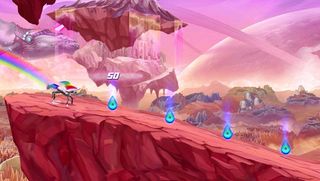
You'll hate: When the controller isn't supported
The Shield's library isn't limited to Steam games--you can grab any Android game or app you can think of off the familiar Google Play store. You'll find a curated list of games that play nice with the Shield; some standouts include Grand Theft Auto: Vice City, Sonic CD, and hack-'n'-slash Eternal Warriors 2, all of which have built-in controller support. Problem is, the majority of Android apps don't recognize your controller--and when that happens, you're forced to use the right joystick as a mouse cursor or get your fingers all over the touchscreen.
Using the touchscreen wouldn't be so terrible if it could somehow swivel down over the controller surface, or detach entirely. But as it stands, you'll have to grip the Shield by the top of its clamshell structure, which feels incredibly awkward. It's the equivalent of gripping a smartphone with a miniature ball and chain hanging off it, and no matter how you try to hold or cradle it, using the touchscreen never quite feels comfortable.
Silver lining: If you're starved for great games with controller support, you can make a beeline for the Android's selection of emulators.
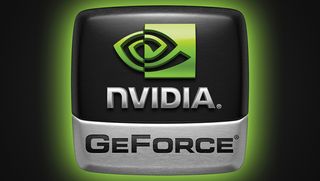
You'll hate: Meeting the strict hardware requirements
Those with any interest in purchasing a Shield for playing Steam games will need to make a hardware laundry list first. This being an Nvidia product, you'll need one of their graphics cards in your rig. But not just any card will do--a GeForce GTX 650 card or better is required, and laptops are currently out of the question. You'll also need a beefy wireless router--dual band with 5G recommended--if you want any hope of a smooth streaming experience. You can go check, but we'll save you the time: you likely don't have one of the suggested routers.
If you don't happen to have these parts lying around your gaming PC, these requirements could ostensibly add $100-$200 to the Shield's already-steep $299 price tag. If you've been looking for an excuse to upgrade your system, and you desperately wish you could play Steam games away from your PC, then here's your perfect excuse to spend a little extra. Otherwise, it's hard to justify overhauling your setup for the Shield.
Silver lining: If you do meet the requirements, getting the streaming functionality up and running is easy as pie, with only a few driver installations necessary.
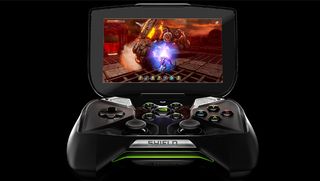
Should you buy it?
Only if you're willing to pay a premium for what's essentially a high-tech accessory. Because you need to be in Wi-Fi range of your PC for the Steam streaming to work, the Shield feels more like a pricey accompaniment for your existing gaming rig than a standalone handheld. While playing games with console-caliber graphics on a small screen is impressive, the latency issues threaten to sully the whole experience, with the fear of a dropped connection looming over every intense shootout and cutscene. It's doubtful that you'd want to play a PC game for the first time on the Shield--it seems to better lend itself to repeat playthroughs in games like Borderlands 2 or Skyrim instead.
If your PC is already packing a high-end GeForce graphics card, then you're already set to play the latest games on some of the highest settings. The Shield won't add anything to that experience; all it offers is a different context, like relaxing on your bed or couch, as opposed to being hunched in front of your monitor.
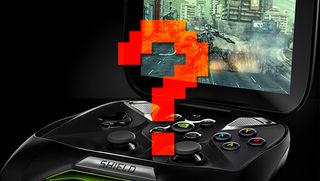
Agents of Shield
Does the Shield sound like the perfect way to get your bedtime gaming fix? Or is PC streaming totally uninteresting to you? Let us know in the comments, and feel free to ask any specific questions you might have about the device.
And if you're looking for some Android gaming suggestions, there's a lot of overlap with our list of the Best Ouya games (though no TowerFall, sorry).

Lucas Sullivan is the former US Managing Editor of 12DOVE. Lucas spent seven years working for GR, starting as an Associate Editor in 2012 before climbing the ranks. He left us in 2019 to pursue a career path on the other side of the fence, joining 2K Games as a Global Content Manager. Lucas doesn't get to write about games like Borderlands and Mafia anymore, but he does get to help make and market them.
